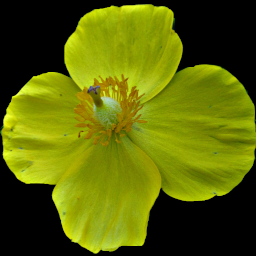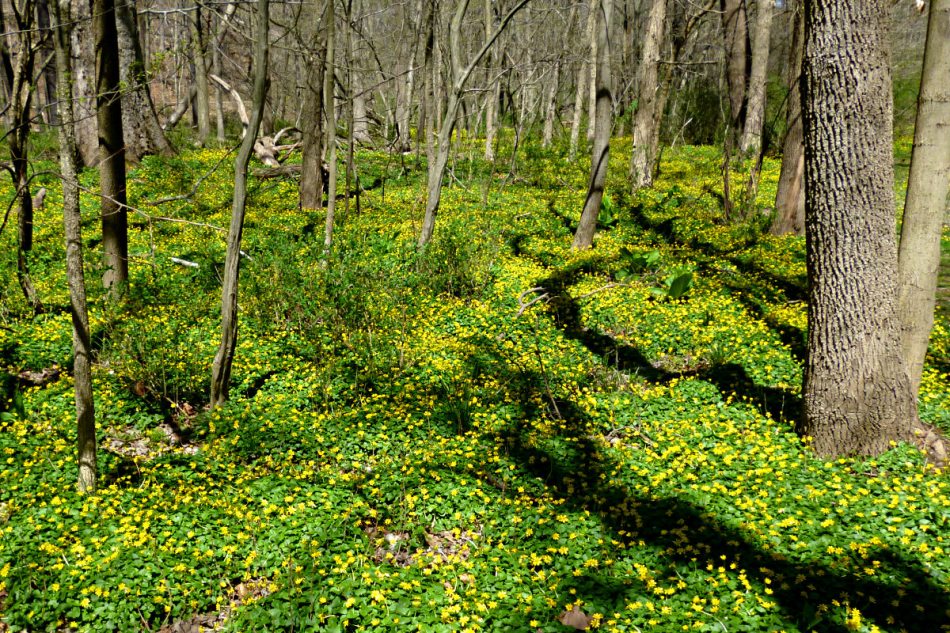A European import, uncommon except in a few areas where it has established enormous carpets that cover acres. The flowers have eight or so very glossy petals, so glossy that they cause blank white highlights in digital photographs. The heart-shaped leaves and dense, carpet-like habit easily distinguish this species from other buttercups. These plants were blooming in the Squaw Run valley in Fox Chapel in late April. The scene below explains why the Celandine is a favorite subject of English poets and painters.
Gray describes the genus and the species:
RANÚNCULUS [Tourn.] L. CROWFOOT. BUTTERCUP. Annuals or perennials; stem-leaves alternate. Flowers solitary or somewhat corymbed, yellow, rarely white. (Sepals and petals rarely only 3, the latter often more than 5. Stamens occasionally few.) — (A Latin name for a little frog; applied by Pliny to these plants, the aquatic species growing where frogs abound.)
§ 1. FICÀRIA Boiss. Roots tuberous-thickened; sepals 3; petals about 8, yellow, with a free scale over the honey gland.
R. ficària L. (LESSER CELANDINE.) Glabrous and somewhat succulent; leaves basal on long stoutish petioles, ovate, rounded, deeply cordate, subcrenate; flowers scapose, 2 cm. in diameter. (Ficaria Karst.) — Wet places, occasional; Mass. to D. C. Apr., May. (Introd. from Eurasia.)



2 responses to “Lesser Celandine (Ranunculus ficaria)”
[…] and acres of Lesser Celandine (Ranunculus ficaria) carpet the forest floor near the Squaw Run in Fox Chapel. These and many other local flowers may […]
[…] related to the Lesser Celandine, this greater Celandine is a member of the poppy family that likes to grow at the edge of the […]